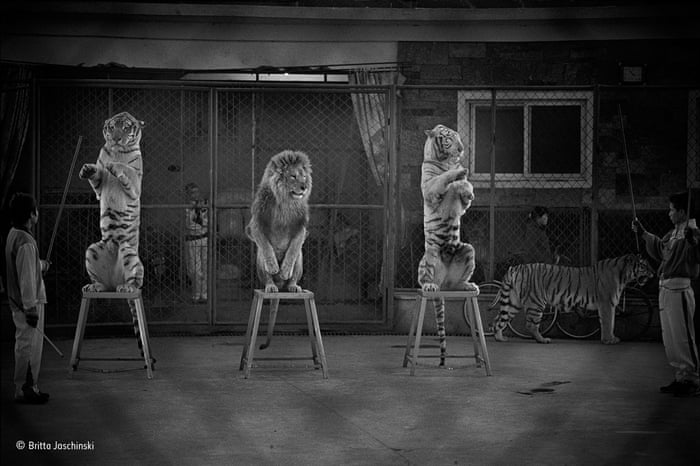Taken by amateur Don Gutoski, the picture captures the moment a red fox hauls away the carcass of its Arctic cousin following a deadly attack in Canada's Wapusk National Park.
"It's the best picture I've ever taken in my life," Don told BBC News.
"It's the symmetry of the heads, the bodies and the tails - even the expression on the faces."
The two animals' ranges overlap at Wapusk, which hugs the shore of Hudson Bay in Manitoba.
And if the larger red catches sight of the Arctic resident, it will try to predate the northern species.
Wildlife guides in the park had spoken of seeing the conflict, but this is thought to be one of the first cases where it has been documented on camera.
Kathy Moran, who sat on the judging panel, said the horror of the scene was surprisingly understated.
"It doesn't come across as gory at all. If fact, when you first look at the picture - it's almost as if the red fox is taking off his winter coat."
Kathy, who is National Geographic magazine's senior editor for natural history projects, also described it as an image with a powerful message about climate change.
Following are the other winners of the competition.
Young wildlife photographers: 11–14 years old winner: Ruffs on display by Ondrej Pelánek (Czech Republic).On their traditional lek ground – an area of tundra on Norway’s Varanger Peninsula – territorial male ruffs in full breeding plumage show off their ruffs to each other, proclaiming ownership of their courtship areas.
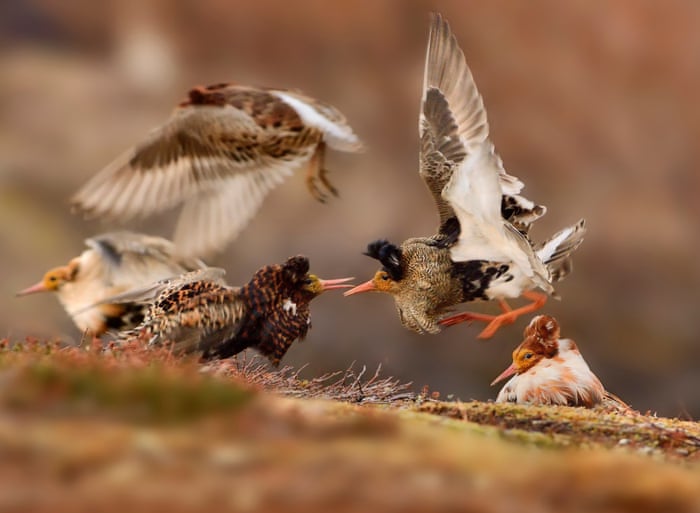
Young wildlife photographers: 15–17 years old winner: Flight of the scarlet ibis by Jonathan Jagot (France). On a boat off the island of Lençóis on the coast of north-east Brazil, Jagot captured this shot of scarlet wings against the canvas of sand and tropical blue sky.

Birds winner: The company of three by Amir Ben-Dov (Israel).
Red-footed falcons are social birds, migrating in large flocks from central and eastern Europe to southern and south-western Africa. Six days watching these three resulted in a picture that reveals a subtle interaction: one female nudged the male with her talon as she flew up to make space on the branch for the other female. Exactly what the relationship was between the three birds remains a mystery.
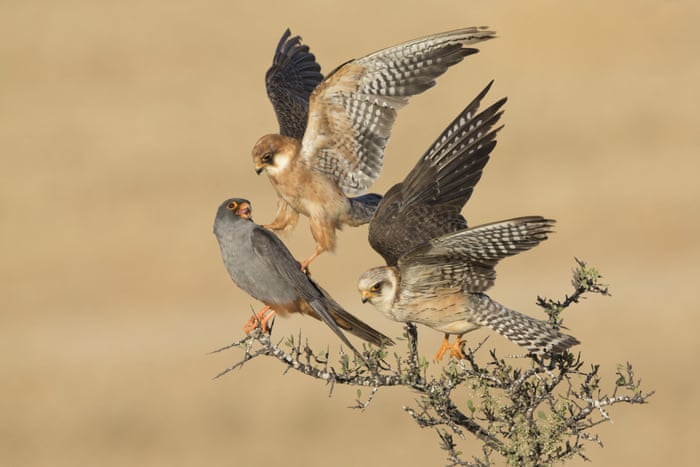
Amphibians and reptiles winner : Still life by Edwin Giesbers (The Netherlands).
A great crested newt hangs motionless near the surface of the stream.
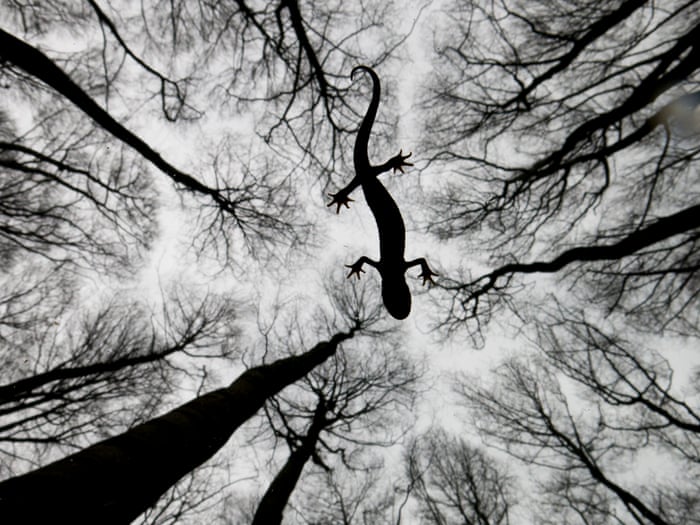
Underwater winner: A whale of a mouthful by Michael AW (Australia).
A Bryde’s whale rips through a swirling ball of sardines, gulping a huge mouthful in a single pass.
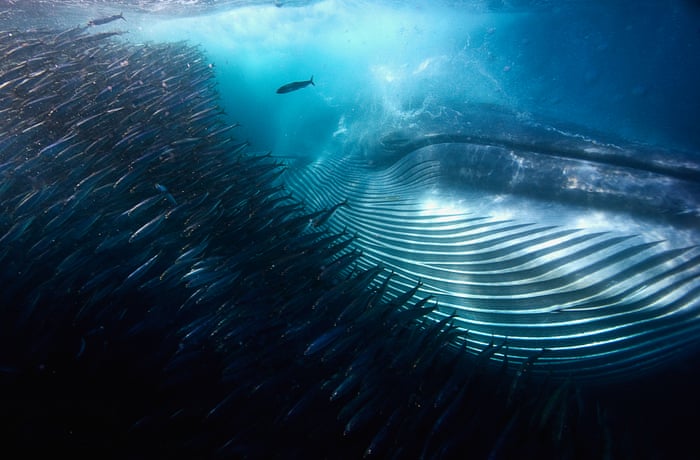
From the Sky winner: The art of algae by Pere Soler (Spain).
In the Bahía de Cádiz natural park on the coast of Andalucia, Spain, Soler captured a spring phenomenon only fully visible from the air. As the temperature warms and the salinity changes, the intertidal wetlands are transformed by colour as bright green seaweed intermingles with multicoloured microalgal blooms. White salt deposits and brown and orange sediments coloured by sulphurous bacteria and iron oxide add to the colours.
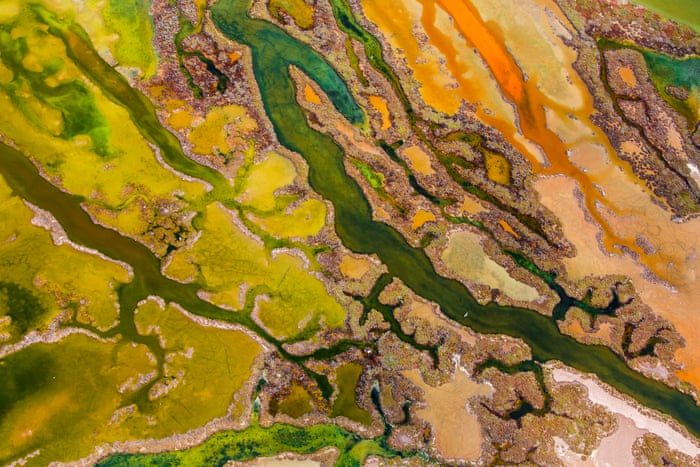
Urban winner: Shadow walker by Richard Peters (UK).
A snatched glimpse or a movement in the shadows is how most people see an urban fox. This shot conveys a sense of living in the shadows.

Impressions winner: Life comes to art by Juan Tapia (Spain).
Tapia made a swallow-sized hole in an oil painting in a old barn and moved it over the window that the swallows entered through, capturing the moment one of the swallows swooped in with the sky behind.

The wildlife photojournalist award: single image winner: Broken cats by Britta Jaschinski (Germany/UK).
Big cats perform at the Seven Star Park in Guilin, China. They have had their teeth and claws pulled out, and when not in the arena, they live in the tiny cages visible behind the stage. For the past 20 years, Britta has travelled extensively, documenting the world of animals in captivity. But never, she says, has she come across ‘such brutal and systematic deprivation’ as in China.
